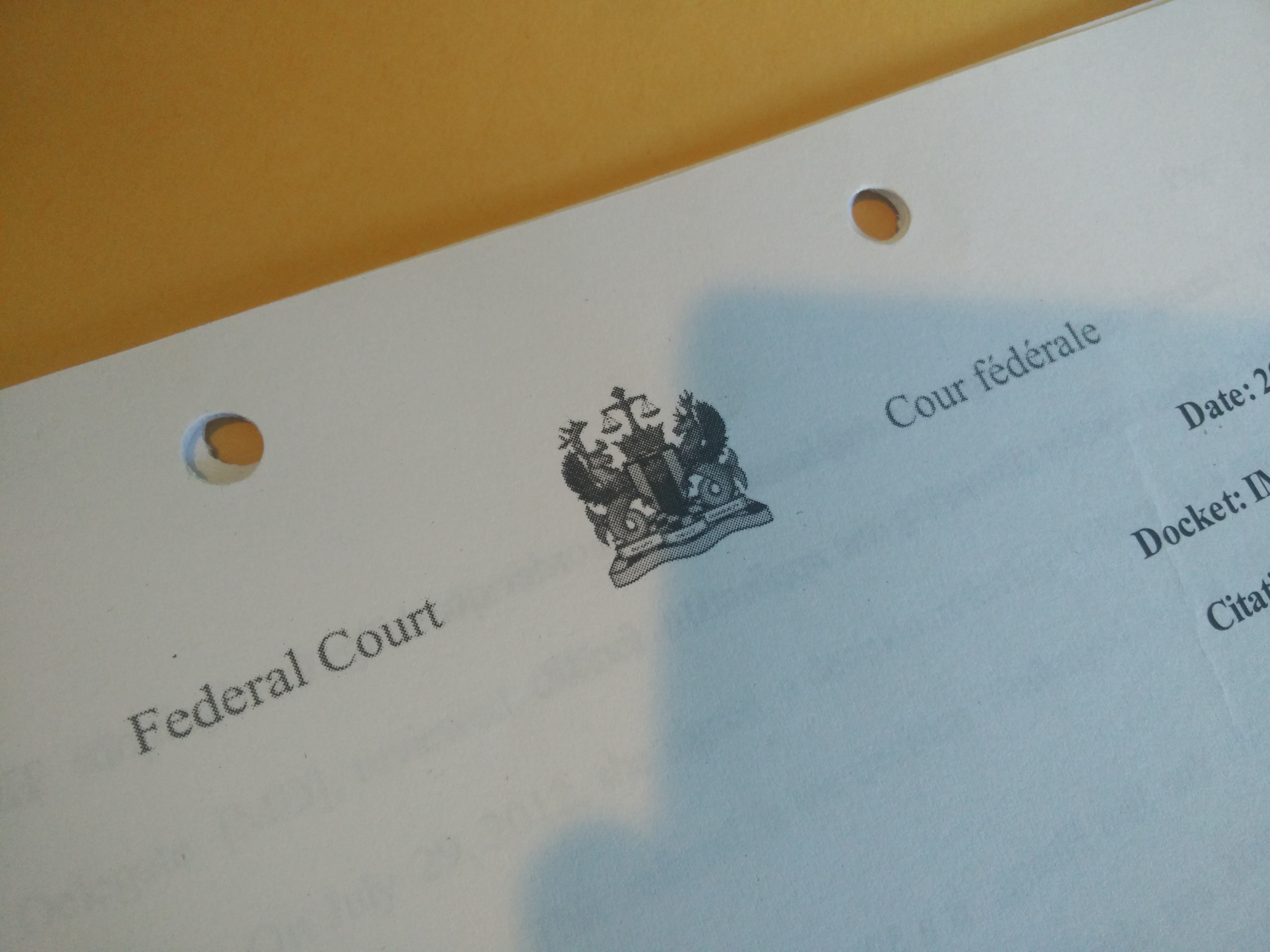
Introduction
As many of you might know, our Firm recently won an important Federal Court case relating to dual intent, a much maligned but rarely addressed legal concept in our Immigration and Refugee Protection Act (“IRPA”).
I want to discuss a few of the principles of the case, but equally important walk through some of the lessons I learned through this case, my first start-to-finish Judicial Review as an Articling Student.
Dual Intention Is Not Dead
Prior to this case, I remember quite clearly several discussions between lawyers on the Canada Bar Association’s Canadian Immigration Email Listserv, asking the question:
Is Dual Intention Dead?
I think Justice O’Reilly, who it is to be noted has allowed judicial review in quite a few of the recent cases he has heard, came out with an emphatic “no” in his recently released decision in Jewell v. Canada (Minister of Public Safety and Emergency Preparedness) 2015 FC 1046.
To recap, Mr. Jewell was an American-Citizen who had a Canadian-born girlfriend. There were text messages on his phone that were recovered by CBSA Officer through a cellphone search that made the Officer believe Mr. Jewell had established permanent residency in Canada without having obtained permanent resident status purportedly contrary to s.20(1)(a) of IRPA. The Officer and Minister’s Delegate, in their interviews of Mr. Jewell, looked at his pattern of travel over a two week period, and determined that it was consistent with a Canadian permanent resident, commuting to the U.S. for work, resetting his temporary status through his frequent trips. The terminology they used (although not specifically cited in the decision) was that Mr. Jewell was “abusing the privilege of his six-month visitor visa exemption.”
As soon as the case came through the door, something smelled fishy to me. How can any an officer determine over a two week period whether someone had established permanent residence? Why was the physical residence in Canada a trigger point? Aren’t there arguably many temporary residents in Canada (students, workers, visitors alike) who live in Canada and have houses here. We early on isolated, dual intent as the battleground in this case.
From a litigation standpoint, one of the more interesting parts of this case came, after leave was granted, when we learned that a recent dual intent case had been dismissed by the Federal Court in Barua v Canada (Minister of Public Safety and Emergency Preparedness), 2015 FC 172. In Barua, the Federal Court completely dismissed the applicant’s dual intent argument concluding that Mr. Barua had several attempts to establish his dual intent and simply did not not demonstrate that he would leave when required. I remember when preparing our further memorandum that there would be no way Barua would not be cited by DOJ (Minister’s counsel) and made the conscious decision that we would approach and address that case preemptively.
However, an the case carefully I realized there were several factual nuances. Mr. Barua had previously arrived in Canada under false pretenses of having a work permit, but no real job opportunity at the time. He also was counselled several times to apply for permanent residency and ultimately told Officer’s he could not leave and would not leave Canada.
What initially was going to be a dagger blow, turned out to be a blessing in disguise. We were able to clearly draw a line in the sand between the cases DOJ were relying on – all individuals who had long-term patterns, non-compliance, and multiple opportunities to establish their dual intention and Mr. Jewell, who really was not offered even one opportunity to state his dual intention or have his dual intention adequately assessed.
Justice O’Reilly’s decision in our case is a short one. In fact, he managed to summarize in four paragraphs what 20 pages of our Final Memorandum emphasized. I wanted to present those four key paragraphs, as they are quite important to my assessment of the implications of this case:
III. Was the delegate’s decision unreasonable?
[11] The Minister submits that the exclusion order was reasonable because Mr Jewella dmitted his intention to reside in Canada permanently. Further, Mr Jewell was behaving as a permanent resident of Canada by commuting from BC to Washington.
[12] I disagree with the Minister’s position. In my view, the delegate failed to assess Mr. Jewell’s dual intention to be a temporary resident at present, and to become a permanent resident later.
[13] IRPA provides that foreign nationals may hold the intention to become permanent residents without being precluded from becoming temporary residents if they show they will leave Canada at the end of their authorized period of residence (s 22(2)). If they cannot do so, an exclusion order will be considered reasonable (Barua v Canada (Minister of Public Safety and Emergency Preparedness), 2015 FC 172 at para 22; Sibomana v Canada (Minister of Citizenship and Immigration), 2012 FC 853 at paras 27-28).
[14] The evidence before the delegate did not show that Mr Jewell intended to become a permanent resident of Canada without abiding by the applicable rules. At best, the evidence was ambiguous. Further, there is no evidence that Mr Jewell would refuse to leave Canada, or that he would fail to observe any other legal requirements.
[15] Therefore, in my view, the delegate’s decision did not represent a defensible outcome based on the facts and the law. It was unreasonable.
Implications
While arguably that this case is too fact dependent and the reasoning too short to be considered a strong precedent, I think Jewell does bear some weight for future temporary residents trying to come to Canada with an eye to permanent residency.
From having looked at the case law, Jewell is one of the first decisions that really tackles this issues for an individual who does not yet have an application in processing. Prior to Jewell dual intention was commonly considered only available for those who had access to a readily available permanent residence option or more often had a sponsorship application in process and wanted a Temporary Resident Visa to visit in the interim.
With Jewell, I can see more challenges to cases where evidence such as cellphone records or bag searches turn up evidence which suggests lives are being packed in preparation for immigration. The case suggests it is not enough to simply look at private text messages between couples saying “I am moving to Canada” or look at whether an individual is shipping his household furniture to Canada.
Jewell suggests that at the very least a dual intention analysis needs to be carried out by the Officer. I would assume that such a process should be done pursuant to CIC’s explicit instructions on the issue. Importantly, as stated in the instructions:
Officers are reminded to use their own judgment and the flexibility afforded to them by A22(2) when making decisions in cases with a dual intent aspect. CAIPS/FOSS/GCMS notes should clearly demonstrate the officer’s reasoning when assessing a case.
In Mr. Jewell’s case, while there may have been some assessment of where he lived and what he had been texting to his girlfriend, there was ultimately no assessment of dual intention or if Jewell would leave Canada and abide by the rules and regulations.
Possible Mitigation Strategy
I do not see “dual intention” being a magic incantation that an individual can simply recite at the Port of Entry. An individual who’s travel history clearly demonstrates that they have no intention and/or means to establish legal permanent resident status but are still trying to come in as long-term repeat temporary residents (i.e. through frequent flagpoles) will increase their risk of having their dual intention requests denied.
On this note, obtaining a visitor record may assist in establishing dual intention and facilitating entry (particularly for cross-border couples).



